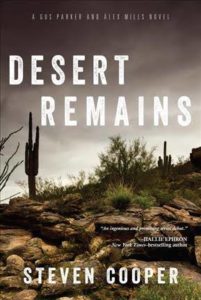To the extent that the aesthetics of a place affect your characters’ sensibilities, it’s important that the reader sees these aesthetics, too. An absorbing place influences both character and reader. It allows readers and characters to temporarily share the same space, to live amongst each other. I’m a proponent of this. Also, if your reader is reading to escape, you better give them a destination and bring them there.
So, how do you create a cinematic experience for your readers? How do you bring them someplace they’ll never forget? In a class I teach I call it, “Zoom In and Zoom Out.” Go in for every sensory and visual detail, scan the horizon, and then widen out to see the broader picture and the context. See which of those details best tell your story. Which ones best define your characters, the action, and the setting?
Being there
There is, of course, no better way to capture a setting than to be writing from within the setting. So, you live in Minneapolis and you’re writing about Minneapolis; the prompts are right out your window. You’re fully immersed in your setting and how much of that immersion you want to bring into your novel is up to you. You begin with an encyclopedia of details, and then you identify the ones that are relevant to your characters and the ambience and temper of your story. If you’re writing stories that take place in other worlds, your imagination is perhaps the only tool that can take you there (unless you’ve entered into a secret agreement with Elon Musk), but you might also want to turn to scientific research or theory, spectacular photography in National Geographic, or nighttime on a blanket under the stars.
Visiting there
Go, if you can. If you’re writing about the Florida Keys and you’ve never been to the Florida Keys, the key is to go to the Florida Keys. Nothing captures ambience more than full immersion. Walk around town six times. Listen to the street noise, the chatter of life. Take a good strong whiff of the corner bakery and the saltiness of the sea. The sunsets, my God, the sunsets!
Take lots of photos. These will be your prompts when you get home.
There are stories in every photo. But the stories are usually behind the smiles, well beyond the front door of that house, lurking in the woods beyond the church. You have to go there. The façade is only a prompt. One of my secrets is to take photos at very unusual angles, lots of tilted images for me, off-center, even a bit out of focus, because we rarely write scenes that are straight up and obvious to all. But photos are no substitution for notes. Make lists of all your observations.
If you can’t make it to the Florida Keys, or Nepal, for that matter, then roll up the sleeves and do your research. Go the library. Check the Travel and/or History sections. Take notes, make lists. Set up interviews with people in those far-flung places. Subject yourself to videos from your best friends’ Vegas honeymoon.
Then, of course, there’s Google.
Know your icons
Does your city or town have a famous shopping district like Rodeo Drive? Do you know the name of its airport? What about the true icons of a place? Phoenix has Camelback Mountain. Boston has Fenway Park and the Citgo sign, and too many others to list. In New York City, there are icons on almost every block. Name drop. It gives authenticity. And don’t hesitate to go off the beaten path. Leave the French Quarter and go explore the bayou. Take a break from the beach and find the best dive bar/hair salon/bookstore/corned beef sandwich in Biloxi. Explore the lesser-known areas of your setting and treat your readers to an insider’s view.
Real estate
Whenever you’re describing a character’s home, imagine yourself house-hunting. Notice everything. What does the kitchen say about your character’s life? Does he/she cook, or order in? Is the bedroom a place of misery or sexual delight? Is there a basement? What’s in the basement? Take down every detail. This is also true for a fictional town. You’re buying it. Map it out as you would a blueprint. How close is the sewage plant from the senior center? Who lives up in the hills? Where’s that smell of bacon coming from?
Now what?
Wow, that’s a lot of details you’ve collected about your city/town/planet. You don’t need to, nor should you, use all of them. Keep some in the bank. Now that you have all the smells and colors and tastes and sounds, you get to decide what goes on the page. You don’t need heaps of adjectives, necessarily, or award-winning metaphors and similes around every corner. Often less is more. You know your characters better than anybody. What would they notice? When they see a mountain do they see a mountain or a majestic challenge? Do they notice the screeching of tires? Does the scent of bacon make them swoon? The scent of a woman? The scent of jet fuel? Some people don’t notice anything, while others notice too much. Practice taking a walk down Main Street with both types. It’s great exercise for all of you.
Need another session in creating a memorable setting? Career Authors’ own Laura DiSilverio has more hints here.
How do you get a handle on the “where” of your story? Let’s chat on Career Authors’ Facebook page.

 A former investigative reporter, Steven Cooper has received multiple Emmy awards and nominations, a national Edward R. Murrow Award, and many honors from the Associated Press. He taught writing at Rollins College (Winter Park, FL) from 2007 to 2012. He’ll be teaching at Kennesaw State University (Kennesaw, GA) in 2018.
A former investigative reporter, Steven Cooper has received multiple Emmy awards and nominations, a national Edward R. Murrow Award, and many honors from the Associated Press. He taught writing at Rollins College (Winter Park, FL) from 2007 to 2012. He’ll be teaching at Kennesaw State University (Kennesaw, GA) in 2018.
Born and raised in Massachusetts, Steven has lived a bit like a nomad, working TV gigs in New England, Arizona, and Florida, and following stories around the globe. He currently lives in Atlanta where, when not writing, he spends most of his time in traffic.
Steven Cooper’s latest novel, Desert Remains, is the launch of a new crime series published by Seventh Street Books.





